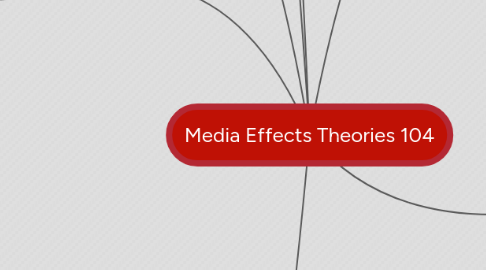
1. definition: the cultural effects of new technology, the ways in which computerization and new technologies impact texts and their messages
2. Ip, address, search queries (p84)
3. keywords
3.1. public sphere: "denotes a social space wherein private citizens gather as a public body with the rights of assembly, association, and expression in order to form public opinion.2 The public sphere mediates between civil society and the state, with the expression of public opinion working to both legitimate and check the power of the state" (DeLuca&Peeples, 128)
3.1.1. rationality
3.1.2. face-to-face talk
3.1.3. consensus
3.1.4. equality
3.1.5. contemplation
3.1.6. bracketing of power relations
3.2. *hypermediacy*: "offers a heterogeneous space, in which representation is conceived of not as a window on to the world, but rather as ‘windowed’ itself– with windows that open on to other representations or other media" (DeLuca&Peeples 132) In other words, the interface makes it obvious that it is a mediated version of reality rather than trying to appear to be reality itself. AND: the public screen is a space for hypermediacy BECAUSE: makes available multiple realities through news and interactions with people across time and space
3.3. public screen: Because the most important public discussions take place in front of screens (computers, TVs, phones), it is not the same as Habermas' "public sphere" as the new technologies have introduced new forms of social organization and new modes perception
3.4. remediation
3.4.1. the representation of on medium in another. usually referring to older media being mixed with new media. Ex: Watching films on an iphone. Listening to radio on your Ipad.
3.5. distraction
3.6. public opinion
3.7. image events
3.7.1. an activity or event staged at least as much for the media as for the participants; a spectacle that will draw the cameras
3.7.1.1. can be used as rhetorical tactic:
3.7.1.2. to place an issue on the political or social agenda
3.7.1.3. attempt to frame the terms of a debate about policy issues
4. Culture & Everyday Life (Wessels)
4.1. Key Ideas
4.1.1. Internet has become a "daily part of life" (130)
4.1.2. Allowed people to create new places and sites for communication and media practices
4.1.3. Many users have modified their daily routines to accommodate the Internet
4.1.4. Internet has become known for its role as a place for cultural exchange, “communication via the Internet helps to sustain cultural identity through the exchange of the ordinariness of culture shared through language and politics” (Wessels 140)
4.1.5. Internet users are more media-connected than non-users (recorded music, newspapers, radio, etc) (131)
5. Web 2.0
5.1. User participation
5.2. Dynamic content
6. READER RESPONSE THEORIES
6.1. Classic Theories of Audience
6.1.1. mass audience
6.1.1.1. example: audience is a collective unit of people who are passive and unified
6.1.2. audience as market
6.1.2.1. example:
6.2. New Perspectives on Audiences
6.2.1. Uses and Gratification
6.2.1.1. definition: what people do with media
6.2.1.2. example: not just content, but also who they interact with (who they are with while watching tv)
6.2.2. Reception Analysis
6.2.2.1. definition: meaning is not fixed
6.2.2.2. example: process of decoding, polysemy, polyvalence
6.2.3. Media in Everyday Life
6.2.3.1. definition:
6.2.3.2. example:
6.3. Digimodernism (Kirby)
6.3.1. key characteristics: user participation, dynamic content, authorship
6.3.1.1. onwardness means
6.3.1.2. Haphazardness: "the fundamental to the grammar of digimodernist texts is how rhetorically, everything is up for grabs"
6.3.1.3. Identity
6.3.1.4. authorship
6.3.1.5. competence
6.4. Meaning of Texts
6.4.1. Polysemy (Fiske) - many meanings of a text
6.4.2. Polyvalence (Condit) - many functions of text
6.5. Ideology and Hegemony
7. INTERNET AND NEW MEDIA PRACTICES
7.1. INDIVIDUALS AND COMMUNITY
7.1.1. Digital Divide (Wessels)
7.1.1.1. Factors influencing exclusion and inclusion
7.1.1.1.1. socio-economic standing, location, ethnicity, language, education
7.1.1.2. Keywords:
7.1.1.2.1. Exclusion
7.1.1.2.2. Inclusion
7.1.2. Googlization (Vaidhyanathan)
7.1.2.1. key terms
7.1.2.1.1. googlization
7.1.2.2. key concepts
7.1.2.3. Google
7.1.2.3.1. advertising business
7.1.2.3.2. we should trust it implicitly
7.1.2.3.3. localization of advertising
7.1.2.3.4. the levels of responsibility
7.1.2.3.5. Privacy Policy
7.1.3. Van Dijck
7.1.4. Andrews
7.2. HISTORY AND POLITICS
7.2.1. Transforming Activisms 2010+ (Blekart and Fowler)
7.2.1.1. Globalization of Disaffection
7.2.1.1.1. Globalization is changing the culture/process of activism.
7.2.1.1.2. Accelerate, amplify, and perpetuate the social events regardless of geographical distances.
7.2.2. Shirky, The Political Power of Social Media
7.2.2.1. Instrumental appraoch
7.2.2.1.1. preventing states from censoring outside websites such as google, youtube
7.2.2.2. environmental approach
7.2.2.2.1. positive changes in the life of a country, including pro-democratic regime change, follow, rather than precede, the development of a strong public sphere
7.2.2.3. Shared Awareness
7.2.2.3.1. the ability of each member of a group to not only understand the situation at hand but also understand that everyone else does too, social media increases shared awareness by propagating messages through social networks
7.2.2.4. internet freedom
7.2.2.4.1. the right of people to use the Internet freely is an appropriate policy because it aligns with the strategic goal of strengthening civil society worldwide and because it resonates with American beliefs about freedom of expression.
7.2.3. Deluca and Peeples reading
7.2.4. Castells
7.2.4.1. Key Terms: noopolitiks
7.2.5. Lessig
7.2.5.1. Key Terms: commons
7.2.5.1.1. Decentralized innovation
7.2.5.1.2. everyone in the community has equal access
7.2.5.1.3. diversity of creativity
